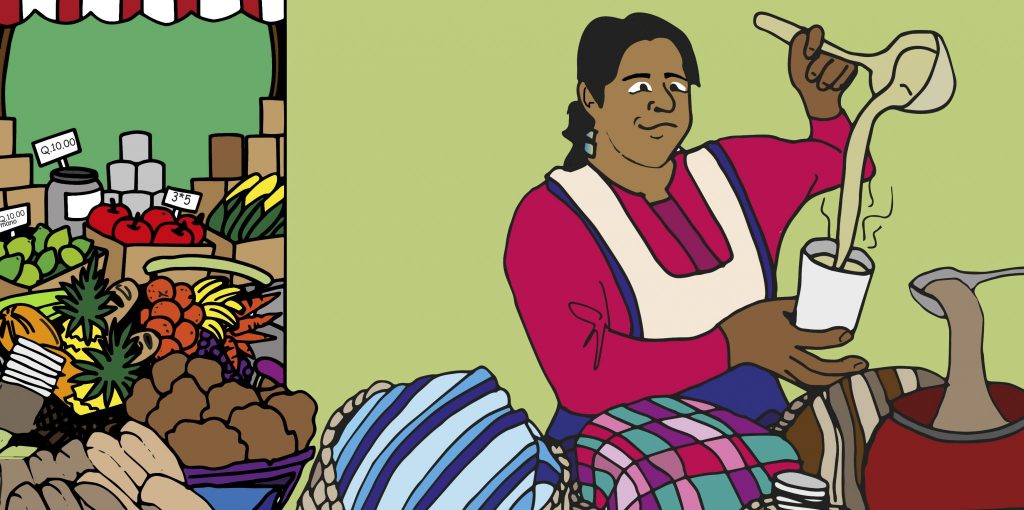
Sariah Azucena Susana Caniz Telón gets off the Tuc Tuc with a bundle of bags at the Municipal Market. Every few days, the main streets from San Juan Comalapa, Guatemala become a picturesque scenery of tables and tents where vendors and residents offer and purchase products for their daily lives. They have done so for many decades.
Sariah is 19 years old. She wears a traditional white blouse with an embroidery depicting a bird and flowers. She carries bags of chuchitos, tamales and atole and walks a few steps to set up her stall at the Municipal Market, where she has been selling food and groceries since she was a kid.
That is why this place brings back good memories from Sariah.
That is where I started our small food business with my mom. I started helping my mom when I was 7 years old.
Sariah was born and raised in San Juan Comalapa, where 97% of the population belongs to the Kakchiquel indigenous community. It is also one of the municipalities in Guatemala with the highest number of young people finishing high school with a higher technical degree. For example, Sariah graduated from high school, with a technical degree in Productivity and Entrepreneurship. She likes to watch television programs to learn about new ideas that she can carry out with her family.
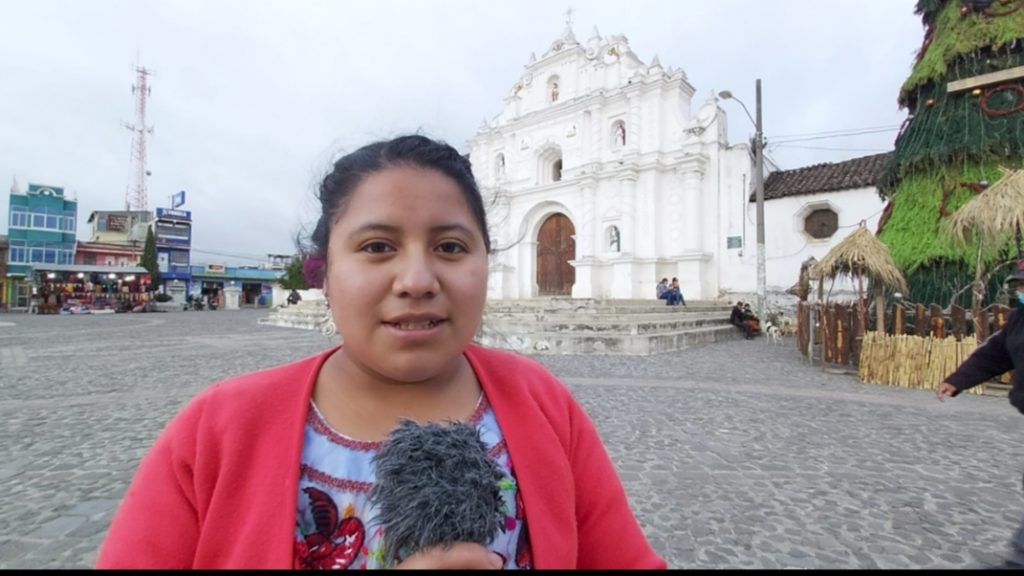
Her regular activities revolve around her business and her home. The Tuc Tuc is the means of transportation she uses the most to carry out her regular activities.
The Tuc Tuc is a means of transportation that can be used by people who do not have their own vehicle, and we use it to go where we want.
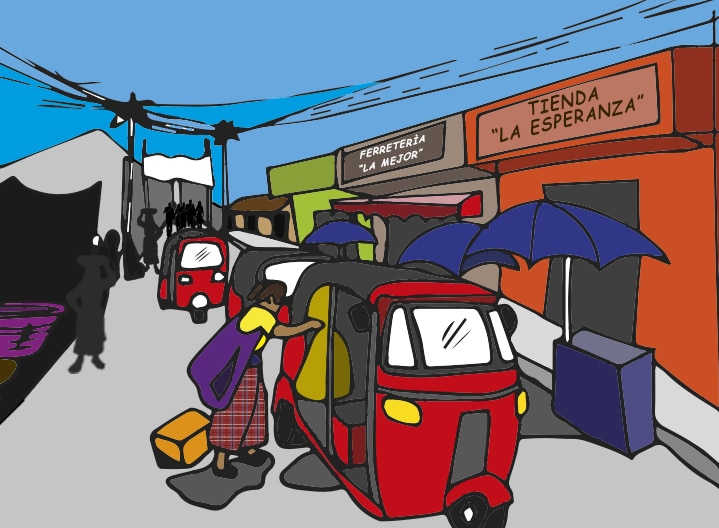
The Tuc Tucs are three-wheelers that run on fuel. They are easily recognized by their bright red colour. The driver sits in the front and can transport up to four people. They are generally roofed and have a space to store bags and luggage.
These characteristics make them ideal vehicles for short trips. That is why it is very common to see them in small towns and cities throughout Latin America.
In San Juan Comalapa, it is the second most used means of transport (with 14% of the modal split), being walking the first. They are used mainly by women (25% of women use them compared to 6% of men) because they are the ones who undertake activities that require several trips, usually involving carrying bags and objects that are too heavy to be held on foot.
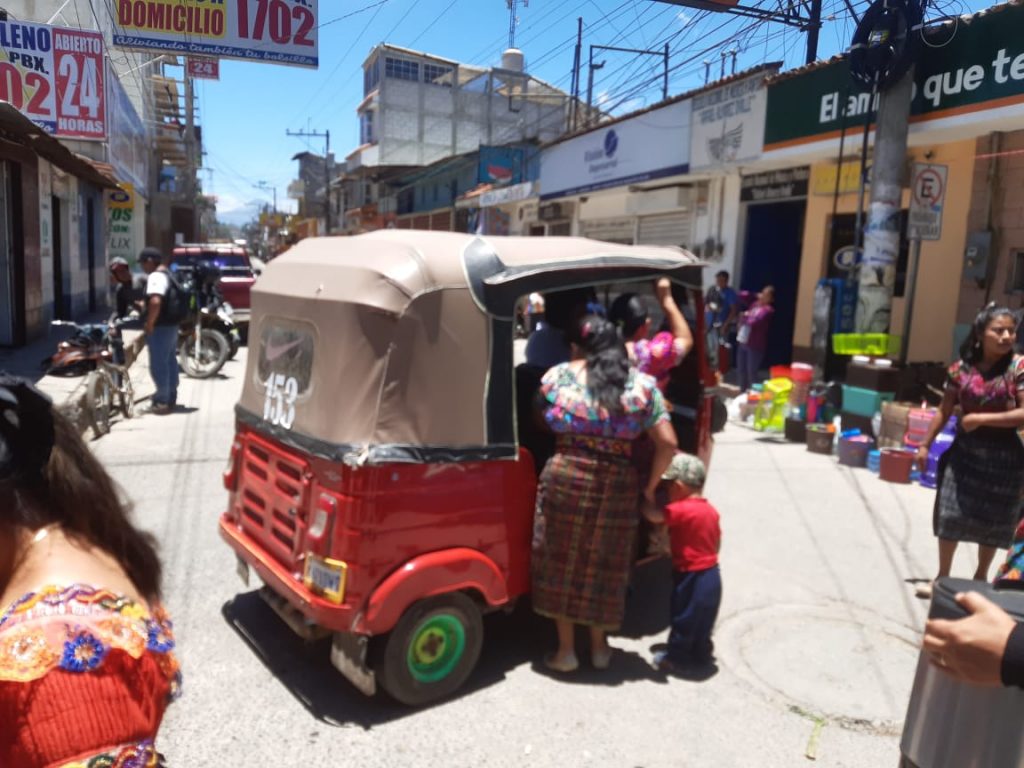
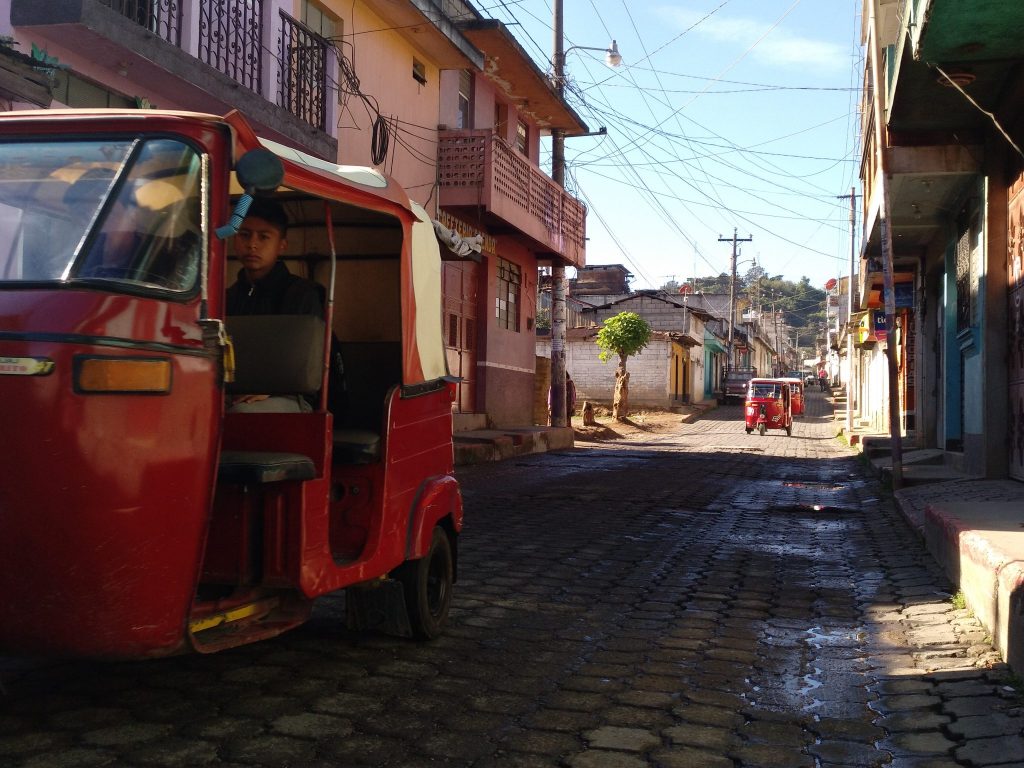
However, many of the Tuc Tucs in San Juan Comalapa have exceeded their lifespan, affecting their service quality.
What I like least is the pollution from the transportation we use, the noise they produce when driving them.
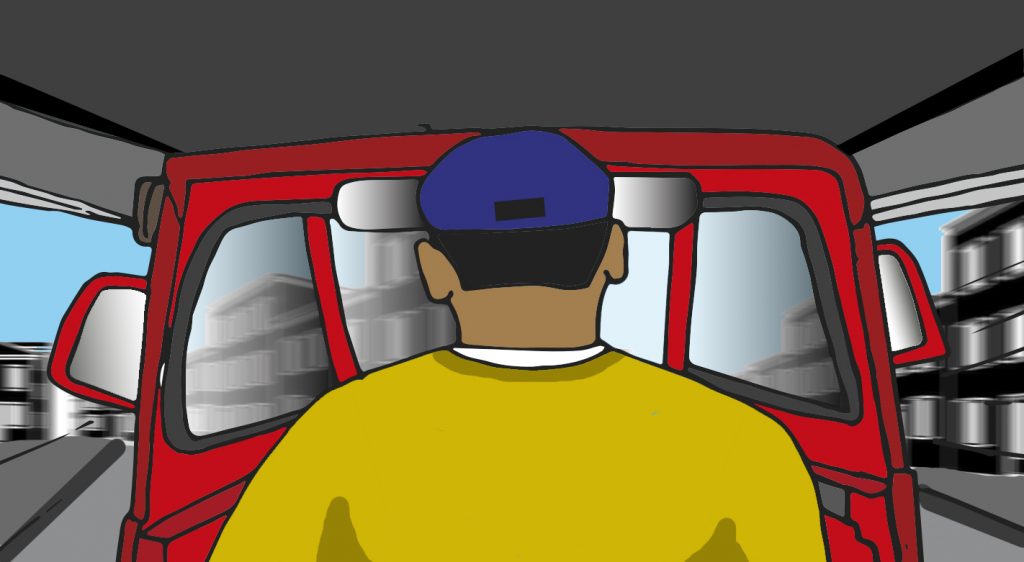
Since 2019, Sariah has been engaged in the citizen initiative “Electric tricycles for social transport, cargo transport and replacement of units”. This project is part of the EUROCLIMA+ programme and is implemented by GIZ. It aims to replace gasoline-powered Tuc Tucs with electric units and provide a transportation service to people in vulnerable situations.
According to Sariah’s experience, some aspects need to be improved: reduce the speed of the Tuc Tucs, as it will be risky for the elderly, make the units more comfortable and cleaner, and improve the quality of the service provided by the drivers.
By integrating the idea of social transportation, the municipality will assist people with disabilities and the elderly, while bringing benefits to the environment.
With the implementation of the project, the aim is to generate jobs through the training of electric tricycle pilots and mechanical workshop personnel. Institutional strengthening is also sought in the Municipality through training on climate change issues, sustainable mobility and the inclusion of a gender perspective in transportation.
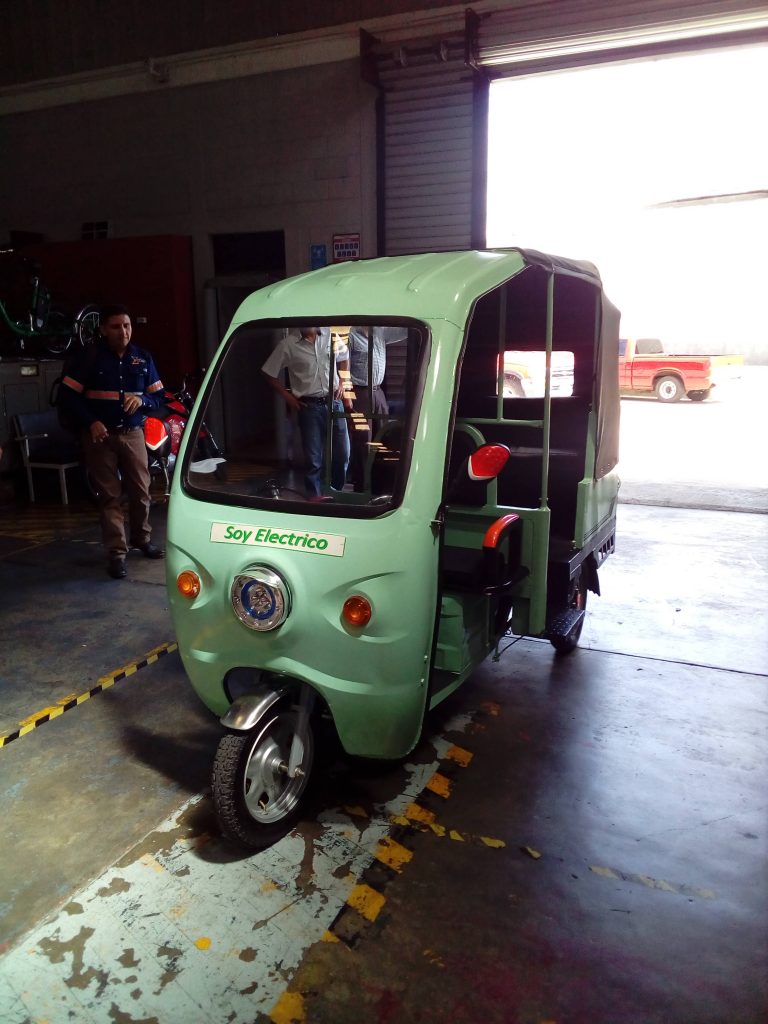
Currently, the project is in the phase of capacitation to the local actors. The next steps consist in the acquisition of the electric vehicles and the start of the project test. It is expected to finish in December 2021.
The renewing of the units gives hope to Sariah and many inhabitants of San Juan Comalapa.
If it were electric Tuc Tucs, it would be more reliable to travel to the destination we are going to. I think I could go to more places, go safely and take my whole family with me.
 © GIZ / Alejandra Morales
© GIZ / Alejandra Morales
You are currently viewing a placeholder content from X. To access the actual content, click the button below. Please note that doing so will share data with third-party providers.
More Information